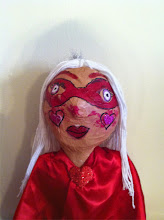Duchamp’s Influence
Ideology is “imaginary representation that men make of their real conditions of existence” pg. 145
All great artists copied, interpreted and recycled masters of the past?
Marcel Duchamp The Bicycle Wheel (1913)
Notion of choice, indifference, best its shared, worst , bores and repulses
Approriation
Yves Klein, Blue Monochrome, 1961, Dry pigment in synthetic polymer medium on cotton over plywood
Marcel Duchamp, LHOOQ, 1919, Found Object
Duchamp gave a loose translation of "L.H.O.O.Q." as "there is fire down below" (in fact the term avoir chaud au cul is slang used in the sense of "to be horny").
Detourement- is a variation on a previous media work, in which the newly created one has a meaning that is antagonist to the original. The original media work that is détourned must be somewhat familiar to the target audience, so that it can appreciate the opposition of the new message. The artist or commentator making the variation can reuse only some of the characteristic elememts of the originating work. (Wikipedia.org)
Citing without quotation marks, without the source and with the aim of deliberating transforming it the idea that one would radically distort it, this was too much Duchamp.
How does the image become the sign?
Reciporal Readymade pg 181
Interpretation error
If the interpretation error is a direct result of the artistic interpretation, shouldn’t the viewer and the artist take in their own meaning for what the are is?
On page 152 Bourriaud states, “We cannot conceive of manipulating objects beyong certain limits, the ideology of comptence induces us unconsciously to refuse treading what we don’t understand”. If expanding the context of art is the meaning of Altermodern, why is he now limiting how far you can go? Isn’t the artist job to break the rules of understanding?
Kim Soo Ja Lotus: Zone of Zero, Installation in the Rotunda at Galerie Ravenstein, Brussels, 2008
Pascale Marthine Tayou Plastik Diagnostik, 2008
Marthine is a Cameroonian sculptor whose signature is the heap: colorful masses of stuff crowd his shows and spill across the floor. He uses plastic bags, gum wrappers, flags, and toothbrushes to create frenzied clutter. Tayou's work is appealing, even cute, but its obssessive proliferation suggests the unhealthy power of material culture. His work is still relatively unknown in the U.S., and I look forward to seeing more of it soon. His website is incredible, an overstimulating masterpiece in its own right: http://www.pascalemarthinetayou.com
It is not surprising that art sometimes moves away from representation to become a part of reality itself
Formal Communism
I again believe that imitation is the sincerest form of flattery
Copyleft- anti copyright movement
Critical Art Ensemble is a collective of five tactical media practitioners of various specializations including computer graphics and web design, film/video, photography, text art, book art, and performance.
Formed in 1987, CAE's focus has been on the exploration of the intersections between art, critical theory, technology, and political activism. The group has exhibited and performed at diverse venues internationally, ranging from the street, to the museum, to the internet.
Inverted artificial tree trunks grafted with real roots, fitted with audio speakers and installed stump side down. Root side up on mirrors (I like the use of mirrors!)
is a multimedia artist whose works engage a variety of social, political, and cultural issues. Often referencing American history, his work explores the varying relationships between culture and politics, engaging subjects as diverse as the civil rights movement, southern rock music, and modernism.
Allen Ruppersberg, Private Conversations, 2006, Installations





_-_Spectrum_13Mar1970.jpg)






No comments:
Post a Comment